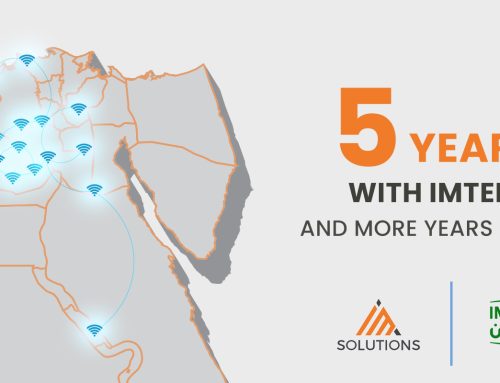Types of Microwave Connection Technology
In today’s hyper-connected world, reliable and fast communication is critical, not just for businesses but also for governments, schools, and everyday individuals. One of the most underrated but powerful technologies that support long-distance communication is the microwave connection. Though lesser-known than fiber optics or cellular data, microwave-based technologies play a vital role in providing high-speed connectivity, especially in remote or underserved areas.
From microwave internet services in rural towns to secure microwave networks used by military and emergency services, this technology has proven its value for decades. In this essay, we’ll explore the different types of microwave connection technology, their origins, technical differences, and practical applications. We’ll also look at how microwave internet continues to evolve in the global digital landscape.
What Is a Microwave Connection?
A microwave connection is a form of wireless communication that uses high-frequency radio waves (typically in the 1 GHz to 100 GHz range) to transmit data between two fixed locations. These connections usually operate on a line-of-sight basis, meaning the transmitting and receiving antennas must be visible to each other without obstructions.
Microwave technology is widely used for:
- Internet backhaul in rural areas
- Long-distance telephone communications
- Military and government communication
- Broadcasting television and radio signals
Origins and Development of Microwave Technology
The first practical applications of microwave technology emerged during World War II, when radar systems were developed to detect enemy aircraft. After the war, researchers adapted these technologies for telecommunications. By the 1950s and 60s, microwave radio links were used for long-distance telephone networks and television broadcasting.
In the modern era, microwave internet and networking have become a valuable alternative to fiber optics in areas where physical infrastructure is difficult or expensive to install.
Today, with the rise of 5G, IoT, and smart city development, microwave networks are being revitalized and integrated into hybrid communication systems around the world.
Main Types of Microwave Connection Technology
Microwave communication is not one-size-fits-all. Different types are used depending on factors such as distance, bandwidth requirements, weather conditions, and environment. The main types include:
- Terrestrial Microwave Links
Terrestrial microwave links are the most common form of microwave communication. These are point-to-point connections between two towers or dishes typically placed on rooftops or hills to ensure line-of-sight.
Key Features:
- Operate in licensed or unlicensed frequency bands (4 GHz to 42 GHz)
- Ideal for distances of up to 50 kilometers (31 miles)
- Can deliver speeds ranging from 100 Mbps to 1 Gbps or more
Use Cases:
- Connecting remote offices
- Internet service providers (ISPs) for microwave internet
- Network backhaul for mobile operators
Example:
In Kenya, Safaricom uses terrestrial microwave links to deliver mobile and internet services to rural villages where fiber optic lines are unavailable.
- Satellite Microwave Links
These use satellites as the medium for transmitting microwave signals from one location to another.
Key Features:
- Useful for long distances, even intercontinental
- Higher latency due to the long distance the signal travels
- Operates in C-band, Ku-band, and Ka-band frequencies
Use Cases:
- Broadcasting (TV, radio)
- Internet access in remote or offshore locations
- Disaster recovery and military operations
Example:
In disaster zones, satellite-based microwave networks are deployed for emergency communication when terrestrial infrastructure is damaged.
- Millimeter-Wave (MMW) Microwave Links
MMW refers to microwave frequencies above 30 GHz. These short-wavelength signals allow for very high data rates over shorter distances.
Key Features:
- Operate in 60 GHz, 70/80 GHz (E-band)
- Ideal for high-capacity links in urban areas
- Vulnerable to weather like rain (rain fade)
Use Cases:
- 5G backhaul
- High-speed enterprise connections
- Temporary event networks
Example:
In New York City, 5G carriers use millimeter-wave microwave links to deliver ultra-fast mobile broadband in dense urban areas.
- Hybrid Microwave-Fiber Networks
Hybrid systems combine microwave connection technology with fiber optics to create robust and scalable communication systems.
Key Features:
- Offers redundancy and increased reliability
- Allows rapid deployment where fiber is unavailable
- Balances cost and performance
Use Cases:
- Smart cities
- ISP infrastructure
- Critical infrastructure like airports and hospitals
Example:
In India, Reliance Jio deploys hybrid microwave-fiber networks to quickly expand internet coverage in new service areas.
Key Differences Between Microwave Technologies
|
Feature |
Terrestrial Microwave | Satellite Microwave | Millimeter-Wave (MMW) | Hybrid Microwave-Fiber |
|
Distance Coverage |
Up to 50 km | Thousands of km | < 5 km |
Varies |
| Speed | Up to 1 Gbps+ | 10–100 Mbps | Up to 10 Gbps |
Depends on setup |
| Latency | Low | High | Very low |
Low |
| Cost | Moderate | High | Moderate |
Varies |
| Deployment Time | Quick | Slow (launch) | Quick |
Medium |
| Best Used For | Rural internet, ISPs | Remote/off-grid areas | Urban high-speed links |
Mixed-use networks |
Advantages of Microwave Connection
Whether used for microwave internet or private microwave networks, the benefits are numerous:
- Fast Deployment
Microwave towers can be set up in days, unlike fiber, which often takes weeks or months to install, especially in mountainous, rural, or urban areas with congestion.
- Cost Efficiency
Microwave links are generally more affordable in areas where fiber infrastructure is lacking or too expensive to build.
- Scalability
With modern adaptive modulation and higher frequency bands, microwave systems can be upgraded without replacing the physical infrastructure.
- Reliability
With proper alignment and maintenance, microwave connections provide consistent, high-quality service. Some providers report uptime of 99.99% in well-managed microwave networks.
Challenges and Limitations
Despite its strengths, microwave technology does come with challenges:
- Line-of-sight dependency: Trees, buildings, or terrain can interrupt signals.
- Weather sensitivity: Rain fade can affect high-frequency signals, particularly millimeter waves.
- Spectrum regulation: Many frequencies are regulated and may require licensing.
Microwave Internet Around the World: Adoption Trends
Microwave internet is making a comeback, especially in underserved regions. Some notable statistics include:
- Africa: Over 30% of ISPs use microwave technology to deliver broadband to rural areas.
- United States: According to the FCC, over 10,000 registered microwave towers support broadband and mobile backhaul across the country.
- Egypt: Microwave networks are widely used for telecom backhaul, especially in desert regions where laying fiber is impractical.
- South America: In countries like Peru and Bolivia, microwave links connect remote mountain communities to the digital world.
Future of Microwave Connection Technology
As 5G continues to roll out globally, the importance of microwave networks is only expected to grow. Millimeter-wave and hybrid systems will serve as critical infrastructure for:
- Smart cities
- Connected vehicles
- Edge computing
- Rural broadband expansion
Moreover, with the rise of AI-powered network management and dynamic spectrum allocation, microwave links will become even more efficient and adaptive.
Conclusion
Microwave connection technology is far from outdated. In fact, it’s one of the most versatile and essential tools in the modern communications landscape. From microwave internet in remote villages to high-speed microwave networks supporting 5G in urban centers, these technologies offer scalable, affordable, and reliable connectivity solutions.
Understanding the different types—from terrestrial to satellite to millimeter-wave—helps us appreciate their unique capabilities and real-world applications. As the demand for high-speed internet continues to rise, especially in underserved regions, microwave technology will remain a key player in bridging the global digital divide.




